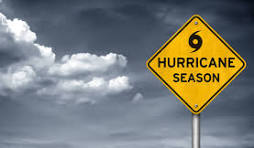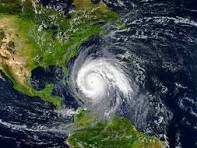Hurricane Alley in the Caribbean: Understanding a Natural Phenomenon
The Caribbean is well-known for being situated in “Hurricane Alley,” a region where hurricanes frequently form and have caused significant impact over the centuries. Understanding Hurricane Alley, its characteristics, the reasons behind its high hurricane activity, and its impact on the region is essential for comprehending the challenges faced by Caribbean communities and the steps taken to mitigate the effects of these natural disasters.

September is the peak of hurricane season in the Caribbean
What is Hurricane Alley?
Hurricane Alley is a term used to describe the region in the Atlantic Ocean where tropical storms and hurricanes are most likely to form and intensify. This area stretches from the west coast of Africa, across the Atlantic Ocean, and into the Caribbean Sea and the Gulf of Mexico. It primarily affects countries in the Caribbean, Central America, and the southeastern United States. The region is characterized by warm sea surface temperatures, low vertical wind shear, and other meteorological conditions that are conducive to the development of hurricanes.
Geographic Scope and Conditions
The geographic scope of Hurricane Alley extends from the west coast of Africa to the Gulf of Mexico, including the Caribbean Sea and parts of the western Atlantic. The conditions in this region, particularly between June and November, are ideal for the formation and growth of hurricanes. Several factors contribute to this:
- Warm Sea Surface Temperatures: Warm ocean water, typically above 26.5°C (80°F), is a primary energy source for hurricanes. The Caribbean and the surrounding waters tend to have warm temperatures year-round, but they peak during hurricane season, providing ample heat energy to fuel storm development.
- Low Vertical Wind Shear: Vertical wind shear refers to the difference in wind speed and direction at different altitudes. Low vertical wind shear is crucial for hurricanes because it allows the storm to grow vertically without being torn apart by opposing winds. Hurricane Alley often experiences lower wind shear during hurricane season, making it more favorable for storm development.
- Moisture in the Atmosphere: Humid air provides the necessary moisture for storm clouds to develop. The Intertropical Convergence Zone (ITCZ), a region near the equator where trade winds converge, brings moisture-laden air into Hurricane Alley, further facilitating hurricane formation.
- Atmospheric Disturbances: Many hurricanes in the Atlantic originate from tropical waves that form off the coast of Africa. As these disturbances travel westward across the Atlantic, they can develop into tropical storms and hurricanes, particularly when they encounter the warm waters and conducive conditions of Hurricane Alley.
Formation and Evolution of Hurricanes in Hurricane Alley
Hurricanes typically form from tropical disturbances, such as tropical waves, troughs, or low-pressure systems. As these disturbances move across the warm waters of Hurricane Alley, they can undergo several stages of development:
- Tropical Depression: When a tropical disturbance develops a well-defined circulation and sustained winds of up to 38 mph (61 km/h), it becomes a tropical depression. At this stage, it is still relatively weak but can rapidly intensify under favorable conditions.
- Tropical Storm: If the system’s winds reach between 39 mph (63 km/h) and 73 mph (118 km/h), it is classified as a tropical storm and given a name. Tropical storms can bring heavy rain and strong winds, but they are not yet as destructive as hurricanes.
- Hurricane: When wind speeds exceed 74 mph (119 km/h), the system is classified as a hurricane. Hurricanes are further categorized using the Saffir-Simpson Hurricane Wind Scale, ranging from Category 1 (least severe) to Category 5 (most severe), based on sustained wind speeds and potential for damage.
- Hurricane Intensification: Factors such as warm sea surface temperatures, low wind shear, and abundant moisture can cause hurricanes to rapidly intensify. In Hurricane Alley, conditions are often optimal for such intensification, leading to powerful hurricanes that can cause widespread devastation.
Historical Impact of Hurricanes in the Caribbean
The Caribbean has a long history of hurricanes that have caused significant loss of life, property damage, and economic disruption. Some of the most notable hurricanes in recent history include:
- Hurricane Maria (2017): One of the most devastating hurricanes to hit the Caribbean, Maria struck Puerto Rico as a Category 4 hurricane, causing widespread destruction and leading to thousands of fatalities. It caused an estimated $90 billion in damage, making it one of the costliest hurricanes in U.S. history.
- Hurricane Irma (2017): Just weeks before Maria, Hurricane Irma, a Category 5 storm, devastated several Caribbean islands, including Barbuda, Saint Martin, and the British Virgin Islands. The hurricane caused widespread damage, leaving thousands homeless and severely impacting local economies.
- Hurricane Dorian (2019): Dorian became one of the most powerful hurricanes on record when it struck the Bahamas as a Category 5 storm. It caused catastrophic damage, particularly on the Abaco Islands and Grand Bahama, with storm surges and flooding resulting in loss of life and extensive property damage.
- Hurricane Mitch (1998): Although Mitch primarily impacted Central America, its effects were felt across the Caribbean. As one of the deadliest Atlantic hurricanes, Mitch caused severe flooding and landslides, particularly in Honduras and Nicaragua, resulting in over 11,000 fatalities.
Socioeconomic and Environmental Impact
The impact of hurricanes in the Caribbean goes beyond the immediate destruction caused by high winds, storm surges, and flooding. The region’s economies, heavily reliant on tourism, agriculture, and fisheries, are particularly vulnerable to hurricane damage. Hurricanes can disrupt livelihoods, displace communities, and lead to long-term economic hardships. The destruction of infrastructure, homes, and businesses requires substantial investment in reconstruction and recovery.
The environmental impact is also significant. Hurricanes can lead to coastal erosion, deforestation, and damage to coral reefs and marine ecosystems. The loss of mangroves and coral reefs, which serve as natural barriers against storm surges, further exacerbates vulnerability to future hurricanes. Additionally, hurricanes can cause saltwater intrusion, affecting freshwater resources and agricultural lands.

Hurricane alley
Mitigation and Preparedness Efforts
Given the high risk of hurricanes in the Caribbean, countries in the region have developed strategies to mitigate the impact of these storms and enhance resilience. These efforts include:
- Early Warning Systems: Improved meteorological technology and satellite monitoring have enhanced the ability to predict hurricanes and provide early warnings to affected communities. Early warning systems are crucial for timely evacuations and preparedness measures.
- Disaster Preparedness and Response Plans: Many Caribbean countries have established national disaster management agencies responsible for coordinating preparedness, response, and recovery efforts. Public awareness campaigns, emergency drills, and evacuation plans are essential components of these efforts.
- Building Resilient Infrastructure: Investing in resilient infrastructure, such as hurricane-resistant buildings, roads, and bridges, is essential to reduce damage during hurricanes. Coastal protection measures, such as seawalls and mangrove restoration, can also help mitigate the impact of storm surges.
- Community-Based Adaptation: Community-based approaches that involve local residents in disaster preparedness and response planning have proven effective. Training community leaders, enhancing local knowledge, and fostering a culture of preparedness are crucial for reducing vulnerability.
- Climate Change Adaptation: Addressing climate change is vital for reducing the long-term risk of hurricanes. As sea surface temperatures rise due to global warming, the frequency and intensity of hurricanes are expected to increase. Caribbean nations are advocating for global climate action and investing in adaptation measures to cope with future challenges.
Hurricane Alley in the Caribbean represents a region of both natural beauty and vulnerability. The unique meteorological and geographic conditions make it a hotspot for hurricane formation, leading to significant challenges for the countries in this region. Understanding the dynamics of hurricanes, their historical impact, and the efforts to mitigate their effects is essential for building a more resilient Caribbean. While hurricanes are a natural part of the region’s climate, ongoing efforts to enhance preparedness, invest in resilient infrastructure, and address climate change are crucial for minimizing their devastating impact on communities, economies, and ecosystems.
